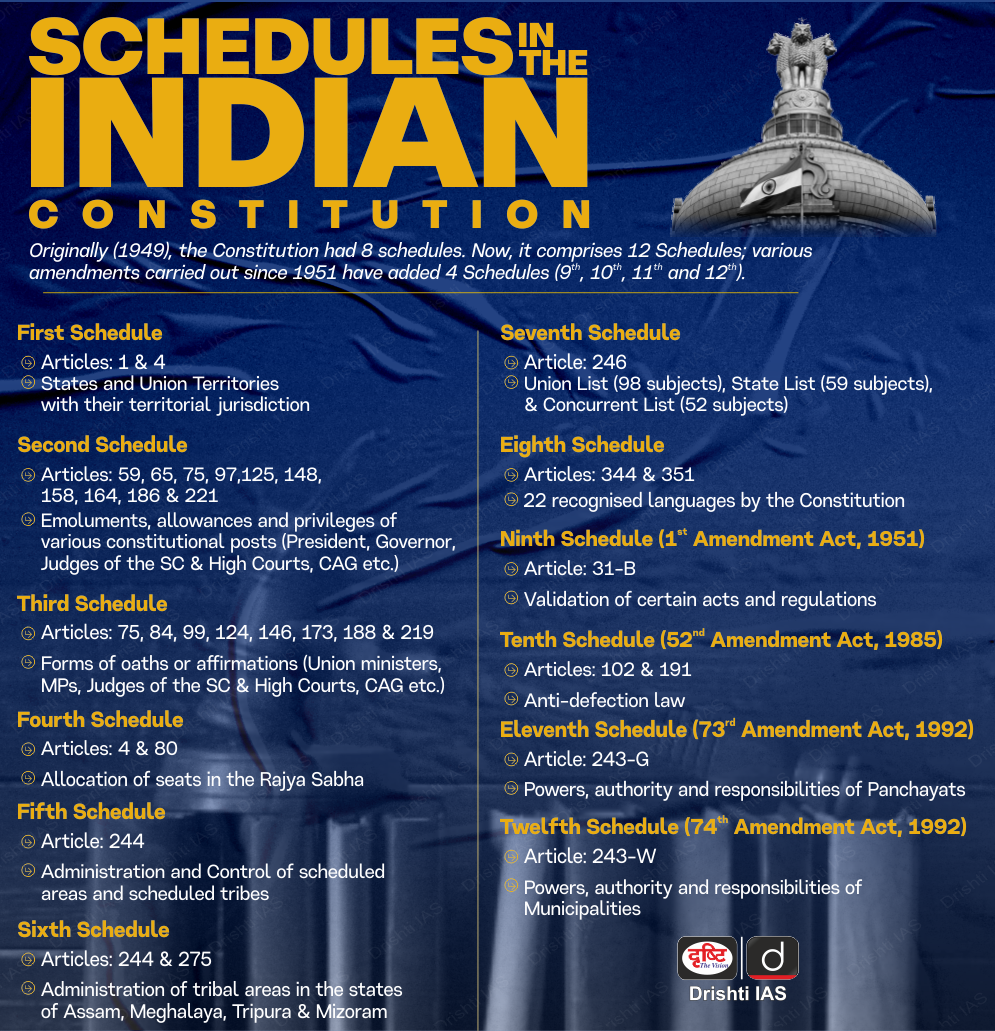Important Facts For Prelims
Maharashtra Mandates Marathi Language Use
- 06 Feb 2025
- 5 min read
Why in News?
Maharashtra has mandated the use of Marathi language in all official communication across government, semi-government, local self-government bodies, and government-aided offices.
- The Marathi Language Policy, approved in 2024, recommends the use of Marathi in all public affairs.
Note:
- Marathi was designated as the official language of Maharashtra in 1960.
- In 2024, Marathi achieved the status of a classical language.
- India has 2 official Languages (Hindi and English) and 22 Scheduled Languages as per the Eighth Schedule to the Constitution of India.
- It includes Assamese, Bengali, Bodo, Dogri, Gujarati, Hindi, Kannada, Kashmiri, Konkani, Maithili, Malayalam, Manipuri, Marathi, Nepali, Odia, Punjabi, Sanskrit, Santali, Sindhi, Tamil, Telugu, and Urdu.
- Part XVII of the Indian constitution deals with the official languages in Articles 343 to 351.
Mandatory Regional Languages in Other Indian States
- Tamil Nadu: Tamil is mandatory for government communication, and passing a Class 10 Tamil exam is required for government jobs.
- Karnataka: Kannada is compulsory in government offices and business signboards, with a law mandating 60% of signboard space in Kannada.
- Jharkhand: Jharkhand mandated knowledge of regional and tribal languages for government jobs, requiring candidates to score at least 30% in languages like Mundari, Santhali, Ho, or Kurukh.
- West Bengal: Encourages hiring candidates fluent in Bengali for government jobs.
What are the Key Constitutional Provisions Related to Official Language?
- Article 345: Article 345 of the Constitution states that a state legislature can choose one or more languages to be used for official purposes.
- This includes the language or languages already spoken in the state, or Hindi.
- Article 347: Article 347 of the Constitution deals with the recognition of languages spoken by a section of a state's population.
- It allows the President to officially recognize such languages if a substantial portion of the state's population requests it.
- This provision allows the inclusion of regional languages into the official framework of the state, ensuring linguistic inclusivity.
- Article 350A: Article 350A of the Constitution requires states to provide adequate facilities for instruction in the mother tongue for children from linguistic minority groups. This applies to primary education.
- Article 351: Article 351 of the Constitution provides for the promotion of the spread of Hindi as a link language without overriding the linguistic rights of states to promote their official languages.
Committees and Commissions Related to Languages of Union
- The Official Languages Commission (1955): It was established under the Chairmanship of B.G. Kher, that examined the issue of the use of Hindi and English as the official language of the Union and made recommendations for the transition to Hindi.
- Parliamentary Committee of Official Language (1976): The Parliamentary Committee of Official Language (1976) recommends replacing English with Hindi in institutions and Central services exams.
- However, these proposals have not been fully implemented due to resistance, especially from non-Hindi speaking states.
UPSC Civil Services Examination Previous Year Question (PYQ)
Prelims
Q1. Consider the following statements:(2021)
- 21st February is declared to be the International Mother Language Day by UNICEF.
- The demand that Bangla has to be one of the national languages was raised in the Constituent Assembly of Pakistan.
Which of the above statements is/are correct?
(a) 1 only
(b) 2 only
(c) Both 1 and 2
(d) Neither 1 nor 2
Ans: (b)
Q2. With reference to India, the terms ‘HaIbi, Ho and Kui’ pertain to (2021)
(a) dance forms of Northwest India
(b) musical instruments
(c) pre-historic cave paintings
(d) tribal languages
Ans: (d)
Q3. Which one of the following was given classical language status recently? (2015)
(a) Odia
(b) Konkani
(c) Bhojpuri
(d) Assamese
Ans: (a)





